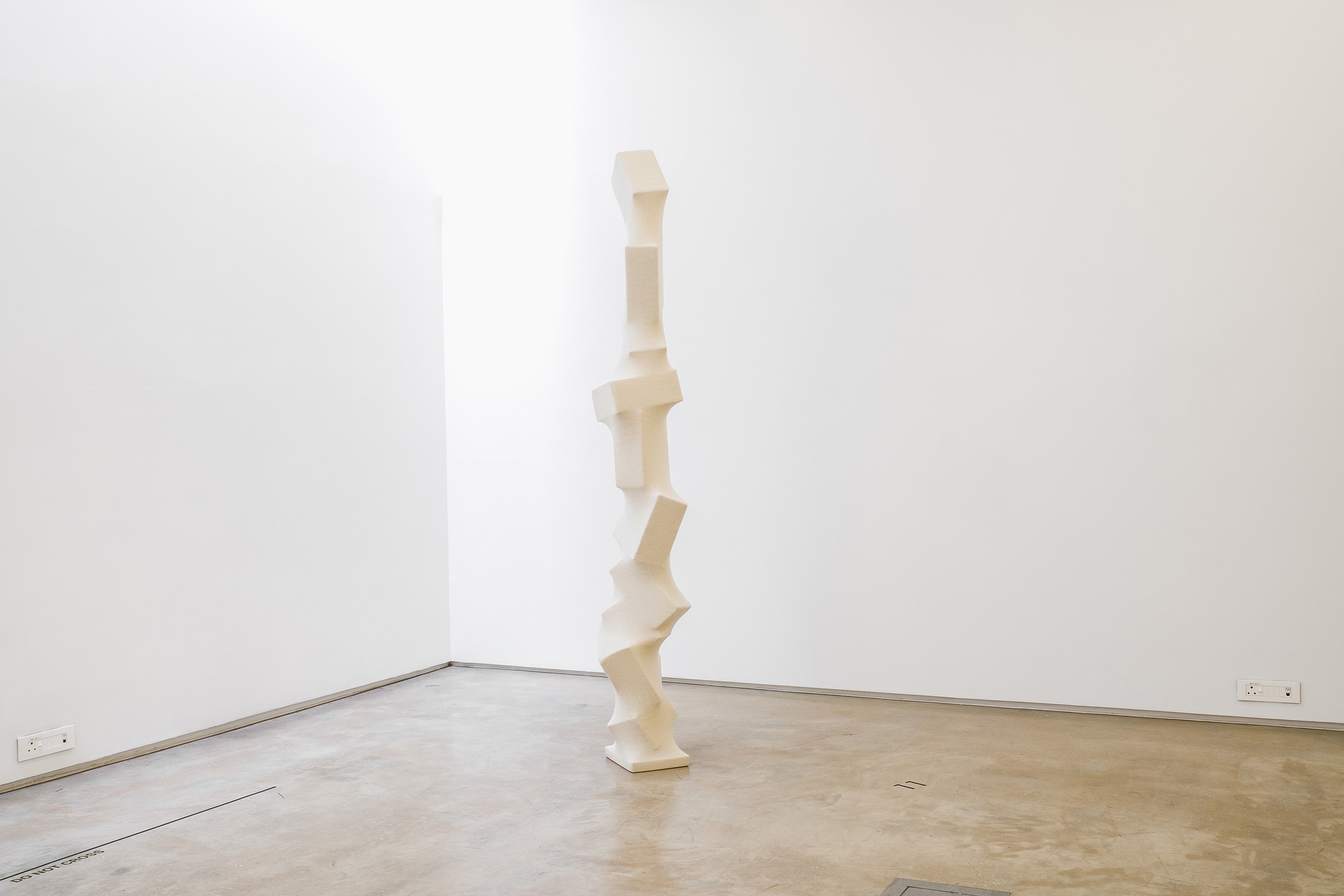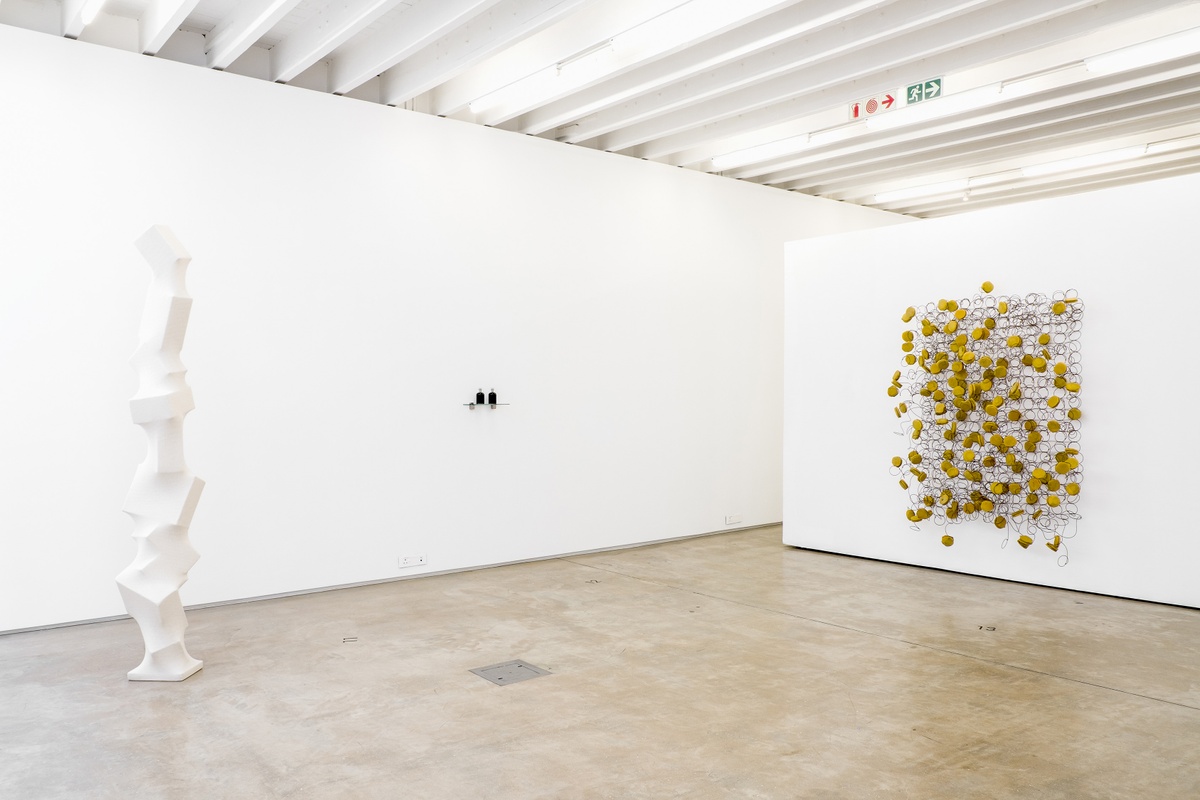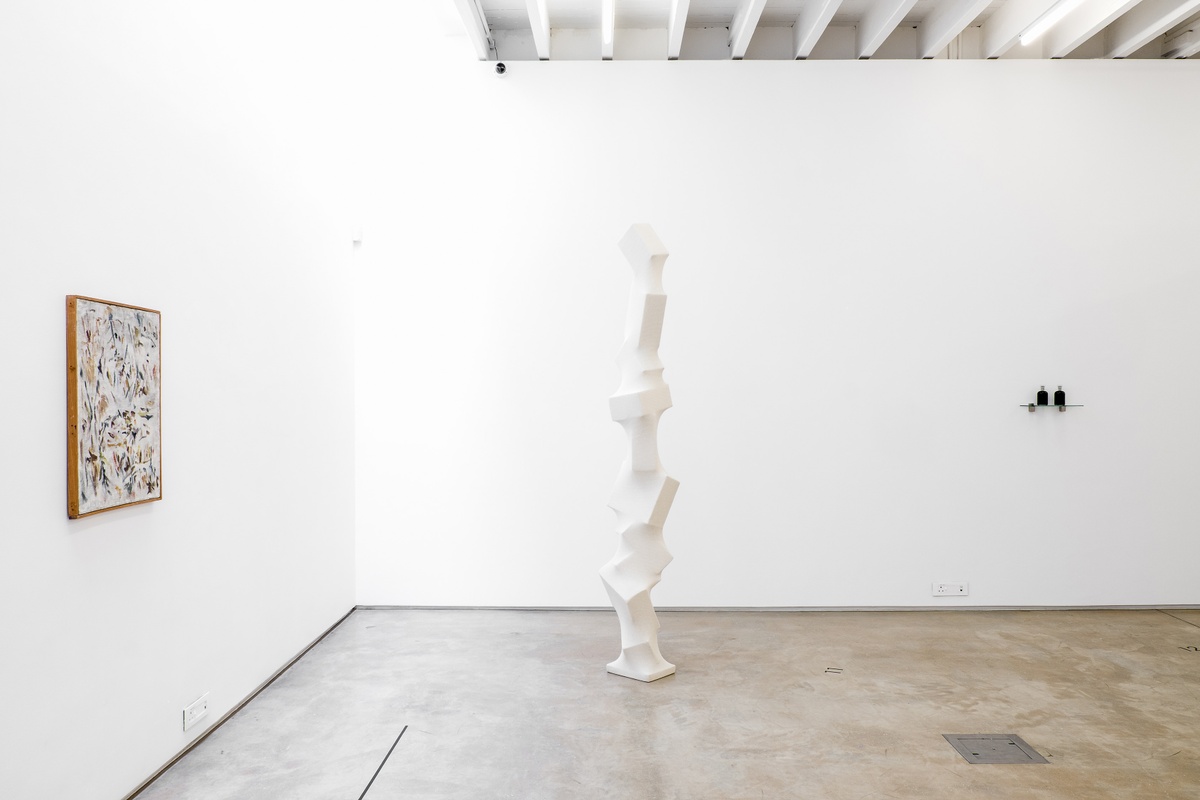Kyle Morland

Nude is among Morland’s more poetic compositions – suggestive in its materiality, its form, its invocations. Covered in layers of mutton cloth, the sculpture’s structure is at once concealed and apparent. In obscuring its steel-and-cardboard construction, the work becomes primarily surface; its material fact hidden beneath fabric. With its form softened by cloth, Nude's straight lines and right angles are paired with more sensuous curves. It is an unusually light offering – in both weight and colour – from an artist given to more large-scale industrial pursuits, to untreated metal and bright paint. In title and form, the work evokes the Cubist figuration of Duchamp’s Nude Descending the Staircase, the geometric transcription of a body set in motion. Such a reading, however, is perhaps fanciful – Morland is not one to imitate such fleshy subjects. Still, the implication remains; the invitation to organise the abstracted image into a momentary, human semblance.
b.1986, Johannesburg
Working to obscure self-imposed rules, Kyle Morland assembles his sculptures with a studied exactitude. While minimalism and formalism perhaps best describe his spatial compositions, such words reveal little of the works’ interior logic. Indeed, few of Morland’s sculptures are purely abstract, most are functionless studies of more functional forms. Made with the precision of an engineer, his sculptures often appear as misplaced industrial parts, reminiscent of air conditioning ducts, metal piping and steel sub-structures. Construction supplies are his medium of choice; from mild steel sheeting to commercial paint. But to his hard-edged, mass-produced aesthetic Morland adds moments of material grace. Cloth, cardboard, masking tape – those things moveable and provisional offer a compelling counterpoint to the artist’s unbending metal forms. “Offsetting his industrial banality,” critic Felix Kawitzky wrote, “is some kind of small yearning which hangs around the sculptures – some hope of escape from the unyielding demands of their ‘formal properties’.”

